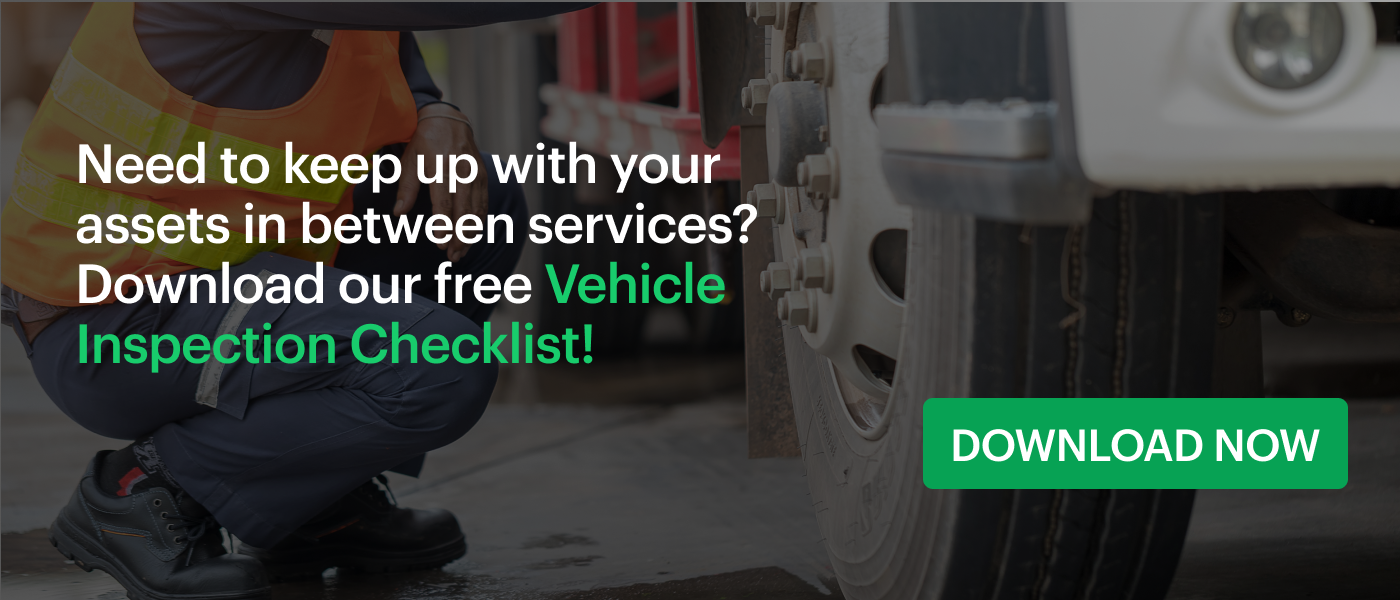We’ve compiled a few key takeaways from our conversations with James Shelton, technical field support manager for Jiffy Lube International, on how to keep your fleet maintenance consistent with seasonal changes and extreme weather.

James Shelton knows what’s going on under the hood – he started off as a mechanic before transitioning into instructional design, becoming an ASE Master-Certified technician and running field support operations for Jiffy Lube International. Living and working in Michigan, he also knows the breadth of what Mother Nature has to offer, and how it can affect fleet vehicles.
We sat down with James to better understand how weather impacts maintenance and what fleet managers can do to stay ahead of the seasons. Here are some tips that you can use for your own fleet maintenance process:
1. Focus on fluids.
No matter the season, making sure fluid levels are topped off with the right amount and kind of fluids is the best way to guarantee that your assets will operate as they should. Fluids like motor oil will react differently to different kinds of weather, and James says that knowing those differences will help you tailor your maintenance to the season you’re in.
"We’re probably very aware that as things get colder, they get thicker," James said. "You’ve heard the saying thick as molasses in January. Think of your motor oil the same way."
Other fluids like radiator fluid also run the risk of freezing without proper freeze protectant if you live in an area where temperatures regularly drop below freezing.
When it comes to preparing for hotter temperatures, James’ biggest recommendation is to verify the quality of the oils you use to ensure that they are right for your vehicles. It’s also important to use Energy Star certified products, and make sure that you follow your vehicles’ OEM specifications to the letter.
"We’re always going to use the manufacturer’s recommendation, because a lot of people think, oh, hotter weather, I need to put thicker oil, or colder weather, I need to put thinner oil," James said. "There are some manufacturers that will actually recommend a different viscosity or thickness of oil based on the time of the year that the vehicle is being operated at. But most manufacturers will stay with a single, typically like a multi-grade type oil that they’ll use year round, and we’re going to use the owner’s manual as our guide for that."
One of James’ favorite hacks for vehicles on the road is to make sure to store any leftover fluids, like windshield washer fluid, in a vehicle to ensure it’s available during seasons where they might need to be topped off more often.
"I always take what’s left and put it in my trunk rather than put it on the bench in my garage, because I know that I’m going to need it again here real soon," he said. "Having a lot of those fluids that you can add yourself, having a small bottle of that or a half bottle of that in your trunk is a good idea."
2. Regular preventive maintenance is key.
Ensuring proper fluid levels is an important facet of any PM schedule, but your whole maintenance process should be geared towards ensuring that all of your assets are ready for whatever weather lies ahead.
"Remember that maintenance is a proactive action," James said. "It should not be reactive."
James recommends following OEM guidelines as closely as possible in order to keep vehicles running the way they were intended. Manufacturers test their vehicles through variable conditions and create maintenance guidelines to meet a standard level of operation, and using the products and timelines they recommend is of the utmost importance to extend the lifespan of any vehicle.
"[The vehicle owner’s manual] should always be your guide," he said. "You see a lot of advertisements, ‘Try this new fluid or try this new cleaner – you’re going to get 10% increase fuel economy.’ With the money that OEMs put into research and engineering, do you not believe that if you could get 10% more fuel economy, that the manufacturer would be using that?"
Good preventive maintenance can also save you time and money by helping you avoid weather-related incidents due to improper preparation for seasonal changes. While it can be tempting to cut corners to save in the short term, the long-term benefits far outweigh any inconvenience that the frequency of PM schedules may present.
"Spend the money up front because in the long run it’s going, it’s going to pay for itself," James said.
3. Find the right third-party maintenance provider.
While proactive beats reactive in the maintenance world, issues are bound to arise when the elements are at play. Regardless of the capacity of your in-house maintenance, having a solid relationship with a third-party maintenance provider can be a lifesaver when adverse weather conditions cause mechanical problems.
"A lot of your service providers will require appointments," James said. "A lot of times you can’t schedule when that serpentine belt is going to break or when, or when a tire blows out – you can’t schedule that. So you need to have a place that is willing to allow you to just show up at their doorstep and say, ‘Hey, uh, we need to replace the serpentine belt today.’ And they’ll take care of you then."
Choosing a maintenance provider that is available when you need them most is important, but you should also consider where you need them as well. Most fleet vehicles venture a long way out of range of a single shop, so choosing a provider that has multiple locations across the locales your drivers frequent can not only ensure availability, but make sure that your vehicles’ information is carried from service to service.
"Jiffy Lube, for example," James said. "When you pull in and you give them your VIN, they know who you are. They know all the maintenance not only has been done at that facility, but at any Jiffy Lube in the system."
4. Know your area of service.
Each fleet has its own routes and areas of service, so knowing what kinds of climates your fleet will be passing through makes it easier to anticipate what kinds of wear and tear your vehicles might experience. James said the smallest things, like what kind of material is used to keep roads from icing over, can make a huge difference in the condition of your assets, as well as how much of certain products you’ll need to keep in stock to service those assets.
"Here in Traverse City [Michigan], we use sand on the road, but downstate, they use salt," he said. "So when you have the salt mixed with the water on the road, it sprays up on your windshield. It actually will coat your windshield. It’ll make your window opaque. You can’t see through it. So you end up using a lot of washer solvent, like I’ve gone through a gallon of washer solvent in a day."
Compare those road conditions with a place like Birmingham, Alabama (where Fleetio is based). Here, drivers are more likely to experience hotter, more humid conditions that can cause engines to overheat faster than they might in Michigan during the same time of year. Running a nationwide fleet means understanding a whole nation’s worth of weather, and the United States has plenty of variety to offer.
5. Prepare in the cabin as well as under the hood.
One of the most common outcomes of weather related issues on the road is simply being stranded, whether you’re iced out in a blizzard or stuck on a shoulder with a smoking engine in the heat. Making sure drivers are equipped with emergency supplies in the cabin of each vehicle can be a literal lifesaver, and this doesn’t just mean your automotive standards like jumper cables and spare tires.
"One thing a lot of people don’t think about is a cell phone battery pack," James said. "And when your battery gets low, most people think, ‘Oh, I just plug it into my car and it will be charged.’ Well, what if the problem, the reason you’re on the side of the road, is because the battery went dead? Now your phone went dead."
James recommends having vehicle specific tools, like ice scrapers, sand for traction, extra fluids and basic tools, as well as items for health and comfort, like blankets, food and water, and even extra medications that the driver might need to see them through any potential roadside incidents.
Want to hear more from James about seasonality? Listen to our whole conversation on The Fleet Code! If you’re in need of a great way to manage your fleet’s relationship with third-party maintenance providers, learn more about Fleetio’s integration with Jiffy Lube.





